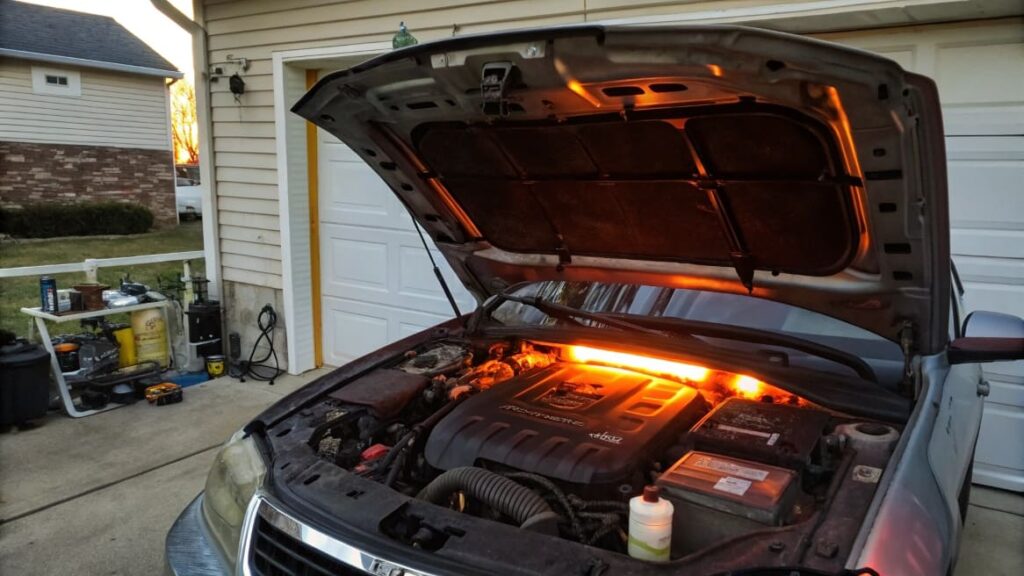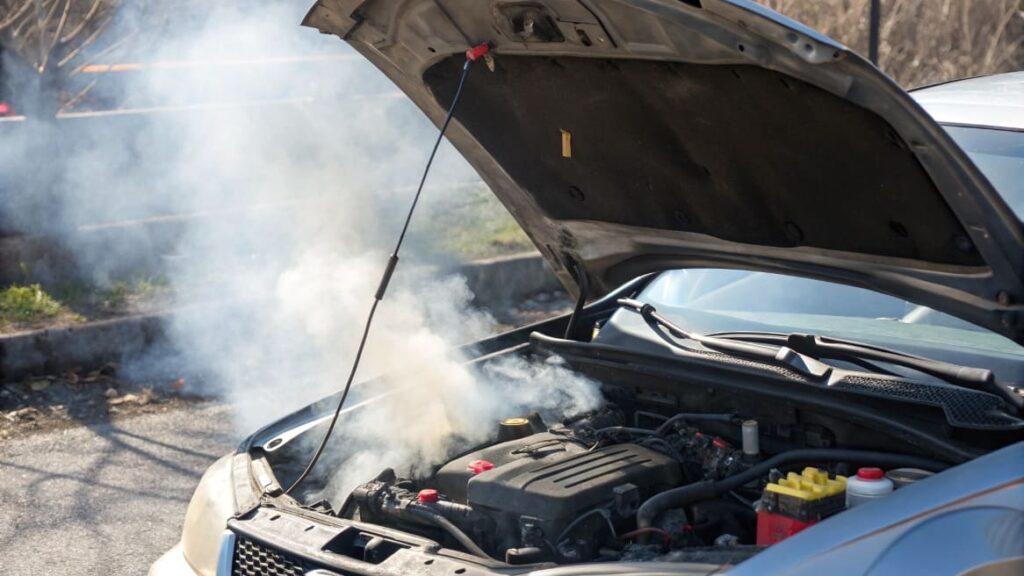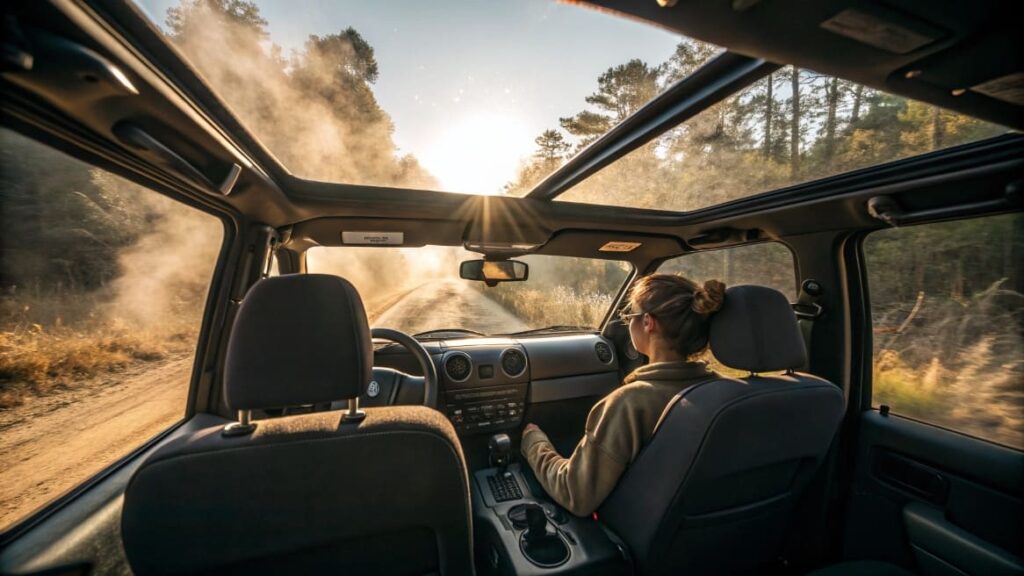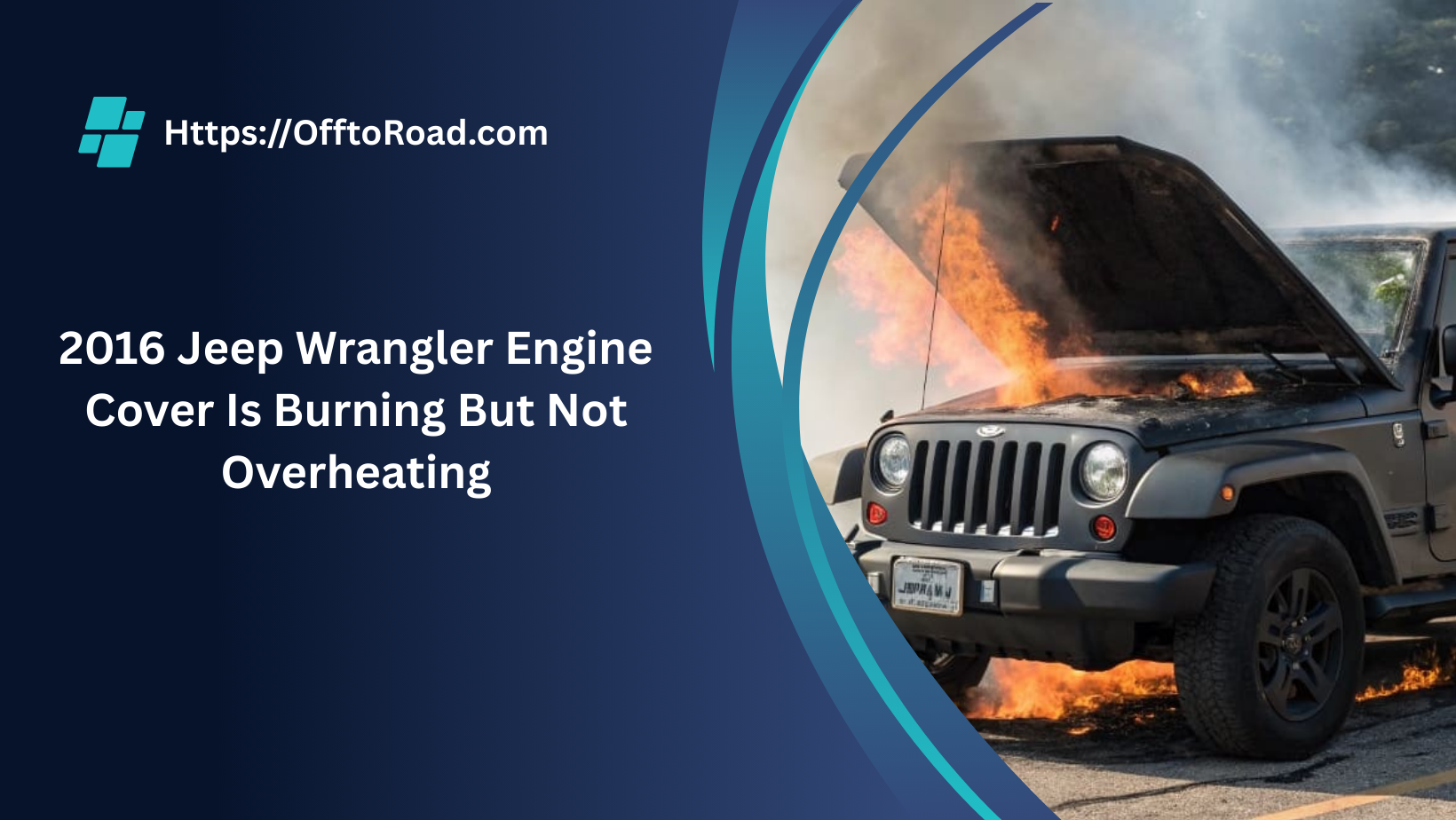If your 2016 Jeep Wrangler’s engine cover feels hot, but your engine isn’t overheating, that’s usually nothing to worry about. The heat from the engine and exhaust system naturally makes the engine cover warm, but if it feels way too hot or if you notice any unusual signs, it’s a good idea to take a closer look.
In this article, we’ll dive into why your 2016 Jeep Wrangler’s engine cover feels like it’s burning, even though the engine isn’t overheating. Let’s clear up the confusion and get to the bottom of what’s really happening.
Is it normal for the engine cover to get hot?
Yes, it’s pretty normal for the engine cover to get hot. You see, the engine bay is packed with components like the engine block and exhaust manifold that generate a lot of heat. Naturally, that heat rises and warms up everything around it — including the engine cover.

So, as long as your temperature gauge is showing that the engine is running at a normal temperature and you’re not seeing any warning lights or smelling anything burning, a warm engine cover is usually no cause for concern.
However, if the engine cover feels way hotter than usual or you start noticing unusual smells or sounds, that could be a sign something’s off. In that case, it might be worth checking things out just to be safe.
Why the Engine Cover Gets Hot:
- Heat from the Engine: When your engine’s running, it burns fuel and produces a lot of heat. This heat naturally spreads throughout the engine bay, and since the engine cover is part of that space, it absorbs some of that warmth. So, it’s actually pretty normal for it to feel hot.
- Exhaust System Heat: The exhaust system gets really hot as it funnels exhaust gases away from the engine. This heat doesn’t stay contained, though — it radiates into the surrounding area, including the engine cover. That’s why it can feel extra warm around the engine bay.
- Longer Drives or Hot Weather: If you’ve been driving for a while or it’s a particularly hot day, the engine bay heats up more than usual. The longer you drive, the more heat builds up, and the engine cover will naturally feel hotter as a result.
- Normal Operation: Simply put, an engine is designed to run hot. So, some heat buildup around the engine cover is totally normal. As the engine burns fuel and runs, the heat is transferred to the surrounding parts, including the engine cover.
- Air Circulation and Cooling: In certain situations, like slow traffic or off-roading, there’s less airflow around the engine. Without that air circulation to cool things down, the engine and its components, including the engine cover, can get a lot hotter than usual.
- Idle Time or Stop-and-Go Traffic: If you’ve been idling or stuck in stop-and-go traffic, the engine doesn’t get the airflow it needs to cool down. So, it can cause the engine and engine cover to heat up more than if you were cruising on the highway.
- Aftermarket Modifications: If you’ve added any aftermarket parts or upgrades, such as performance parts or additional shielding, these can sometimes affect the heat distribution in the engine bay. As a result, you might notice the engine cover getting warmer than usual.
When Should You Worry?
- Unusual Engine Temperature: If the engine temperature gauge goes into the red zone, something’s wrong.
- Warning Lights: If your dashboard lights up, like the check engine light or temperature warning, pull over and check things out.
- Burning Smells: Any burning smell—rubber, plastic, or oil—could indicate overheating or a leak.
- Strange Noises: Hissing or clanking sounds combined with heat should be checked out.
- Steam or Smoke: Steam or smoke from under the hood is a serious sign of trouble.
- Sudden Performance Drop: Sluggish performance with a hot engine cover could mean the engine is overheating.
Also Read: https://offtoroad.com/jeep-wrangler-oil-type/
When You Might Want to Remove the Engine Cover?
There are a few situations when you might want to remove the engine cover. For example, if you’re doing some basic maintenance, like cleaning, checking for leaks, or just inspecting the parts underneath, taking the cover off can give you easier access. If you’re trying to figure out why the engine cover feels unusually hot or you’re investigating a burning smell, removing it might help you spot any issues.
Is It Safe to Remove the Engine Cover?
Generally, yes, it’s safe to remove the engine cover — but it’s important to do it correctly. Most covers are attached with clips or bolts, so just make sure you have the right tools to remove them without causing any damage. It’s also a good idea to wait for the engine to cool down a little before you start, since the engine can stay pretty hot for a while after driving.
Things to Keep in Mind:
When you remove the engine cover, remember to put it back properly. If it’s not securely reattached, it could rattle or, even worse, let dirt and debris into the engine bay. If you’re not feeling super confident about removing it, or if it feels like too much, it might be a good idea to let a professional handle it.
In short, while removing the engine cover is usually fine, just make sure you’re doing it carefully and putting it back properly afterward. Let me know if you’d like more tips or need help with anything else!
burning rubber smell off the engine?

A burning rubber smell usually means that something rubber-based is overheating or coming into contact with a hot engine part. It could be a belt, hose, or gasket that’s starting to wear out or is getting too hot. For example, the serpentine belt, which powers various engine components, could be rubbing against something it shouldn’t be, or a rubber hose might be leaking or touching a hot surface.
How to Know If Your Thermostat Is Bad?
- Overheating/Under Heating: A bad thermostat can cause the engine to overheat or fail to warm up properly.
- Coolant Leaks: Pressure build-up from a faulty thermostat can lead to leaks.
- Poor Heater Performance: A stuck-open thermostat might cause the heater to blow cold air.
- Unusual Engine Behavior: If the engine’s performance drops, the thermostat could be the issue.
- Check Engine Light: A malfunctioning thermostat might trigger the check engine light.
What It Could Indicate?
If you’re smelling burning rubber, it might be a sign of a few potential issues. The most common culprits are:
- Worn or Loose Belts: If the serpentine or timing belts are worn out, misaligned, or too loose, they can create friction, leading to a burning rubber smell.
- Damaged Hoses: Rubber hoses (like coolant or vacuum hoses) that are cracked or loose can come into contact with hot engine parts and start to burn.
- Overheating Engine Components: If parts of the engine are running hotter than they should, it can cause nearby rubber components to burn.
Also Read: https://offtoroad.com/are-jeep-wranglers-front-wheel-drive/
What to Do?
- If you notice a burning rubber smell, it’s important to take action right away. First, pull over and turn off the engine to avoid further damage. Check under the hood for any visible signs of damage, such as worn belts or leaking hoses. If you can’t pinpoint the issue, it’s best to have a mechanic inspect your Jeep to make sure everything is in good shape.
- In short, a burning rubber smell can be a sign of something overheating or wearing out in your engine. It’s always best to get it checked out as soon as possible to avoid bigger issues down the road. Let me know if you need more details or advice!
How do I know if my Jeep Wrangler thermostat is bad?
If you’re noticing that your Jeep Wrangler isn’t running quite right, it might be due to a bad thermostat. Here’s how to tell:
- First off, engine overheating or underheating is a clear red flag. If your engine is overheating or if it takes way too long to warm up, that could mean the thermostat is stuck, either not letting coolant flow properly or not opening when it should.
- Next, if you start seeing coolant leaks around the thermostat housing, that’s another sign. A malfunctioning thermostat can cause pressure to build up, which may lead to leaks — and you definitely don’t want that.
- Another thing to keep an eye on is the heater performance. If your cabin’s heater isn’t working like it should or is taking forever to warm up, the thermostat might be stuck open, preventing warm coolant from reaching the heater core.
- Also, pay attention to any unusual engine behavior. If the engine feels sluggish, idles roughly, or struggles to accelerate, it could be because the thermostat isn’t allowing the engine to reach its optimal temperature.
- Lastly, if the check engine light pops on, it might be a clue that the thermostat is causing problems. The Jeep’s computer system will detect the temperature issue and warn you.
- So, if you’re noticing any of these things, it’s probably a good idea to have your thermostat checked out. Catching issues early can save you from bigger problems down the road!
Jeep Wrangler Hot Smell While Driving?
If you’re noticing a hot smell while driving your Jeep Wrangler, it can be a bit concerning, but don’t worry—it’s often fixable with some quick attention. Let’s break down a few possible causes and what you can do about it.

Overheating Engine:
First up, if your engine is running hotter than usual, it might be producing a hot smell. This is especially true if your engine temperature gauge is creeping into the red zone. When an engine overheats, it can burn off fluids, creating that burning smell. What to do: If the temperature gauge is high, pull over as soon as it’s safe to do so and give the engine time to cool. Then, check the coolant levels and see if you need to top them off.
Burning Rubber Smell:
Another common culprit is a burning rubber smell, which usually happens when something like a belt or hose starts to overheat. Sometimes, the serpentine belt or even a coolant hose could be rubbing against a hot part of the engine, causing it to burn. What to do: Pop the hood and look for any visible signs of damage, like cracked or worn hoses, or misaligned belts. If you find any, it’s time to replace them.
Coolant Leaks:
A hot, sweet smell could indicate that coolant is leaking. Coolant leaks often happen when a radiator hose is cracked, or the radiator itself is leaking. As the coolant evaporates, it produces a strong, hot smell. What to do: Take a look under the Jeep to check for puddles or stains. If the coolant is low, top it off and keep an eye out for leaks in the system.
Exhaust System Issues:
Sometimes, a hot smell can come from the exhaust system, especially if there’s a crack or damage. Hot exhaust gases can escape and burn nearby parts, creating that burning odor. What to do: If the smell seems to be coming from under the vehicle, it might be a sign that the exhaust system needs a check-up. A mechanic will be able to pinpoint any cracks or leaks.
Clutch or Brake Issues:
If you’ve been driving in heavy traffic or making a lot of stops, you might notice a hot smell from the brakes or clutch. This is common if the clutch is slipping or the brakes are worn out. What to do: Check the brake pads for wear, and make sure the clutch is functioning properly. If either seems off, have them inspected and replaced as needed.
Also Read: https://offtoroad.com/what-type-of-gas-do-jeep-wranglers-take/
What Should You Do Next?
- If you notice that hot smell, the first step is to pull over safely and let your Jeep cool down for a bit. Then, inspect the engine for visible leaks or damage. If you don’t spot anything obvious, or the smell doesn’t go away, it’s best to take your Jeep to a mechanic. A professional can pinpoint exactly what’s going on and prevent any bigger issues down the line.
- In short, while that hot smell can be alarming, it’s often caused by something simple like a coolant leak, worn-out hoses, or even an overheating engine. The key is to address it quickly before it becomes a bigger problem. So, stay on top of things, and your Jeep will keep running smoothly.
FAQ’s
1.Can the engine cover feel hot even if the engine isn’t overheating?
Yes, it’s normal for the engine cover to get warm due to heat from the engine and exhaust. As long as the engine temperature is normal and there are no warning lights or unusual smells, it’s nothing to worry about.
2. Is it safe to remove the engine cover for inspection?
Removing the engine cover is generally safe for inspection or basic maintenance. Just make sure the engine is cool, and if you’re unsure, have a professional handle it.
3. Why does my Jeep smell like burning rubber?
A burning rubber smell usually indicates something rubber-based, like a belt or hose, is overheating. It could also mean a part is worn out, so it’s best to check under the hood or visit a mechanic.
4. How can I tell if my thermostat is bad in my Jeep?
If your engine is either overheating or not warming up properly, your thermostat might be the issue. Other signs include coolant leaks or poor heater performance, which are also worth checking.
5. What should I do if my 2016 Jeep Wrangler Rubicon keeps overheating?
If your Jeep keeps overheating, first check the coolant level, as low coolant is a common cause. It could also be a thermostat, radiator, or water pump issue, so consider getting a professional to check it out.
Conclusion
if your 2016 Jeep Wrangler’s engine cover feels hot, don’t panic — it’s often just the heat from the engine at work. However, if you start noticing warning signs like overheating, strange smells, or anything unusual, it’s important to take action. Keeping an eye on things like coolant levels and addressing issues early can help keep your Jeep in great shape and avoid bigger problems down the road.
